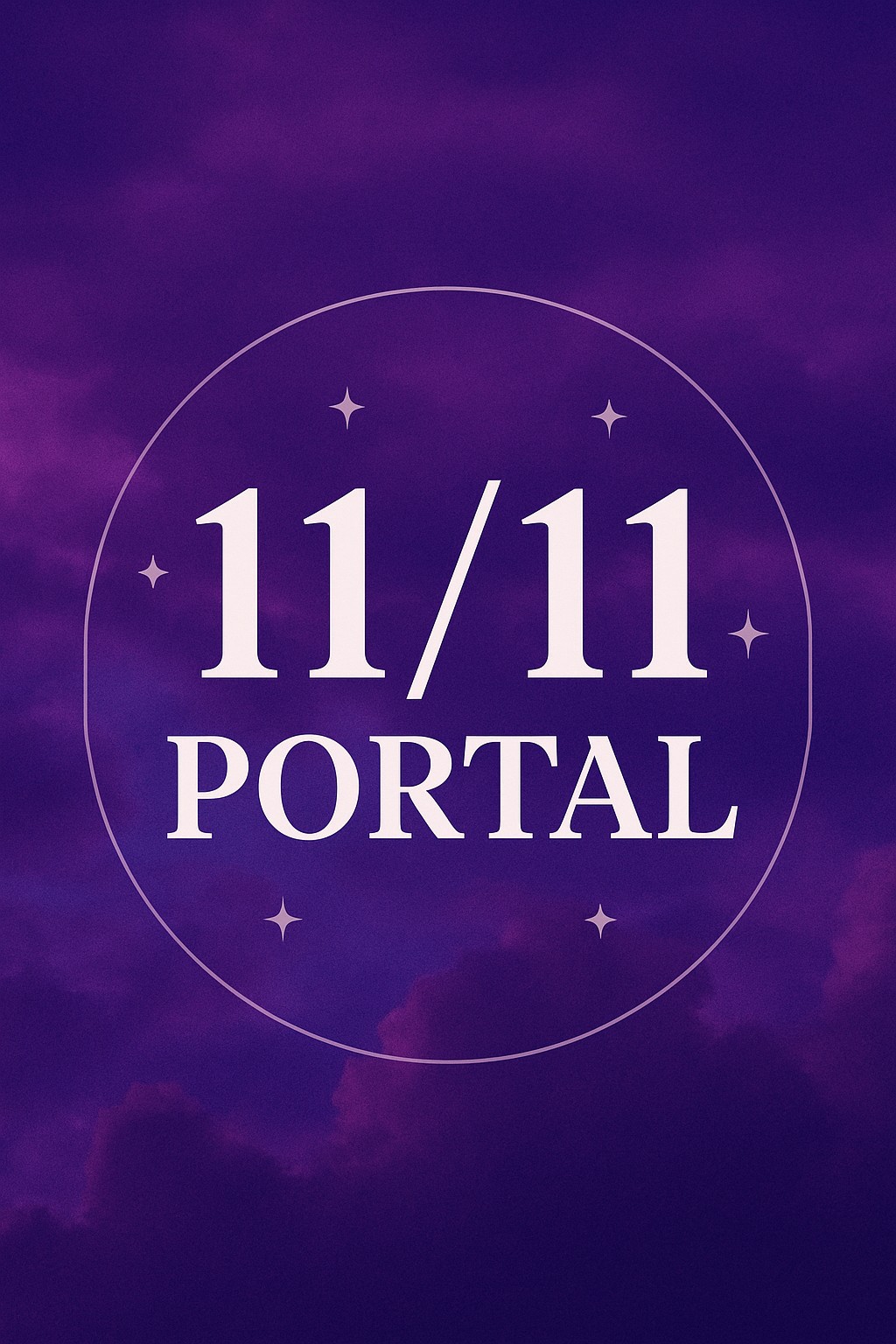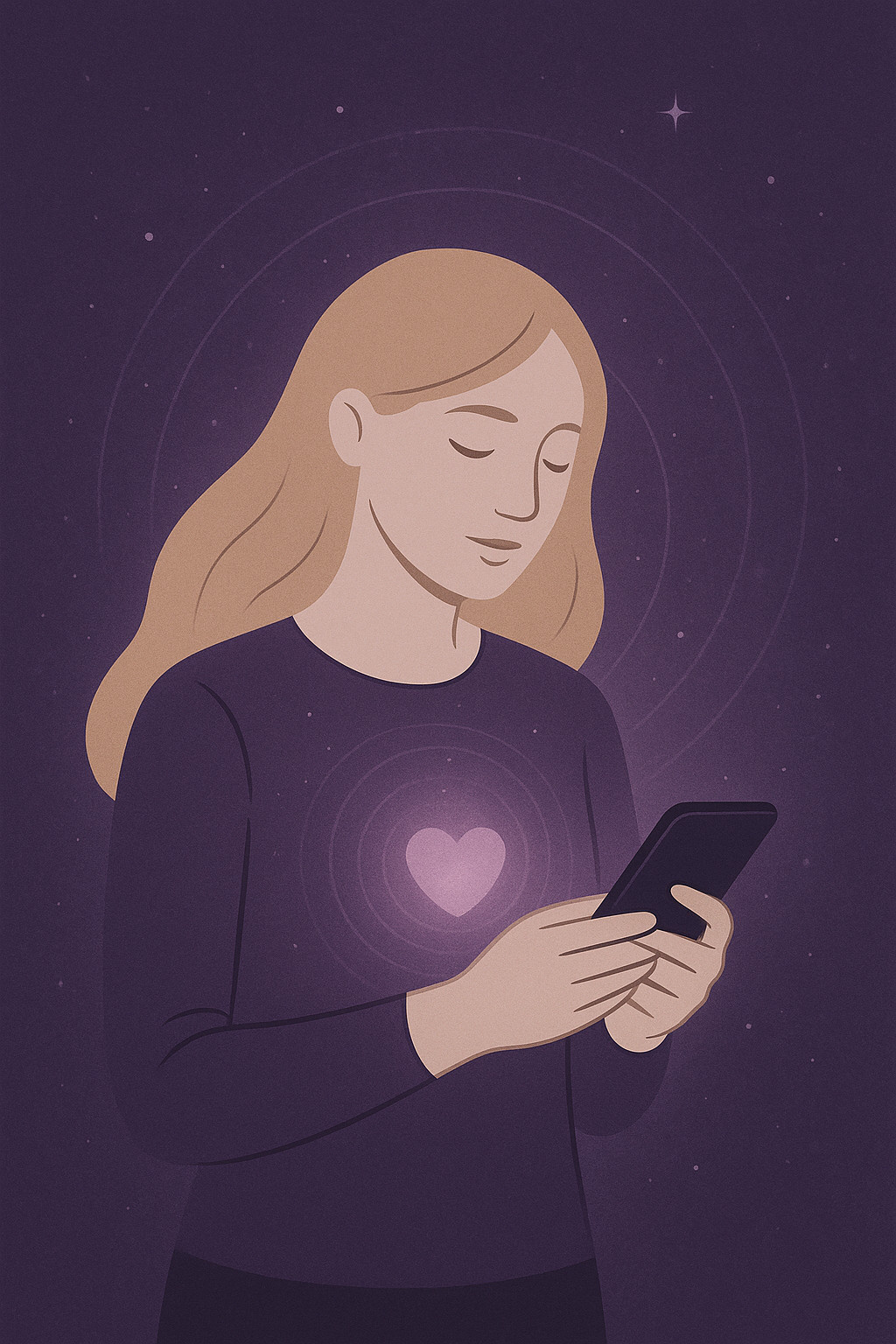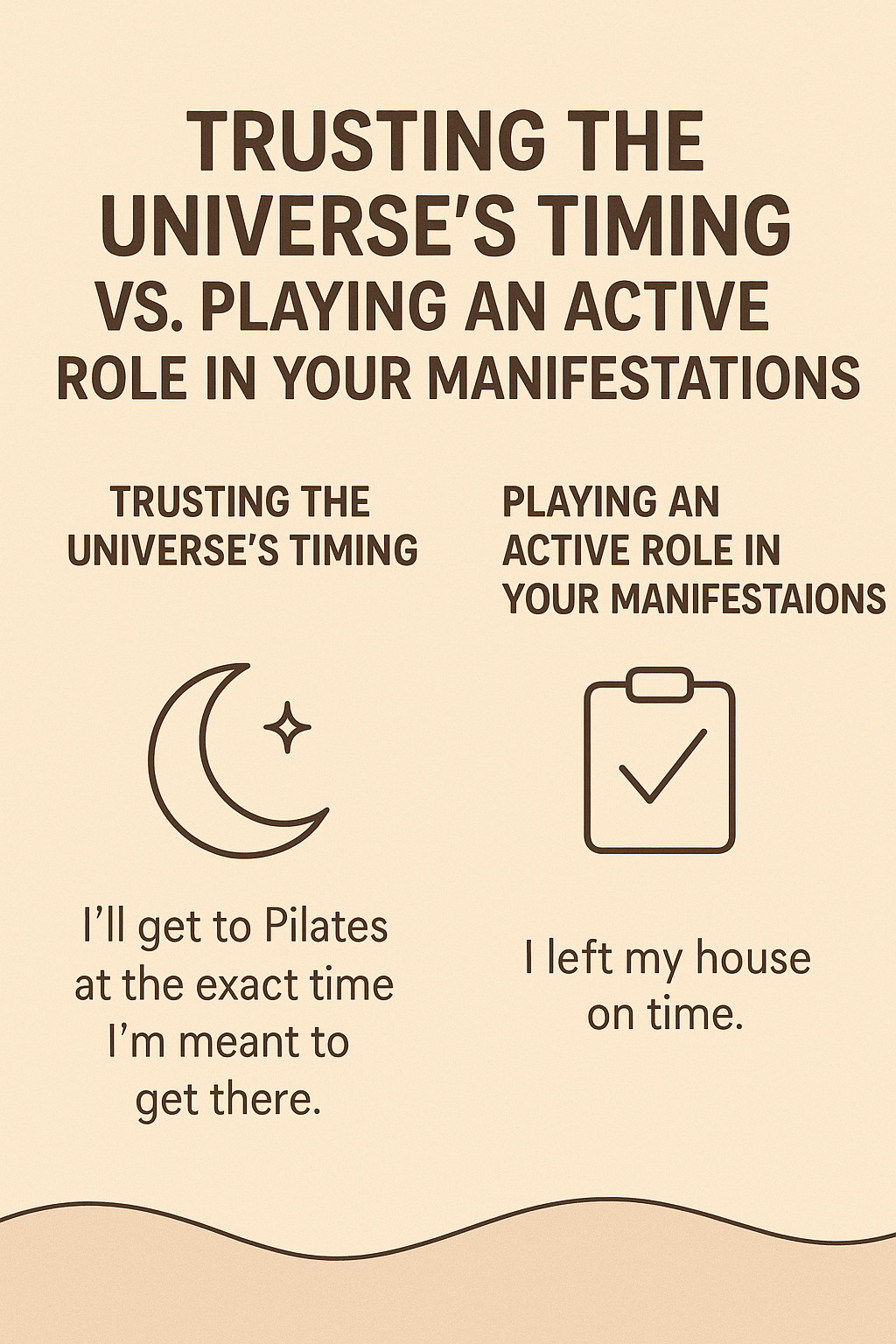
If the last year has felt heavy, reflective, emotional, or oddly quiet on the outside while loud on the inside, there’s a reason for that — 2025 is a 9 Year in numerology. And as we move toward 2026, a 1 Year, we’re collectively stepping out of an ending and into a beginning.
Understanding this transition can help you stop fighting the energy you’re in — and instead work with it.
What Does It Mean That 2025 Is a 9 Year?
In numerology, years move in repeating 9‑year cycles. You find the number by adding the digits of the year:
2 + 0 + 2 + 5 = 9
A 9 Year is the final chapter of the cycle. It’s the year of completion, release, closure, and integration. This isn’t a time to push harder or force what isn’t flowing. It’s a time to finish, heal, and let go.
Common Themes of a 9 Year
- Endings and transitions
- Emotional processing and reflection
- Releasing outdated identities, roles, or relationships
- Forgiveness and compassion
- Decluttering — physically, emotionally, spiritually
- A strong pull toward meaning and authenticity
In a 9 Year, things often fall away naturally. Jobs end. Relationships shift. Old dreams lose their sparkle. This isn’t failure — it’s completion.
Many people experience a sense of limbo in a 9 Year. You may know what no longer fits, but not yet see what’s next. That’s normal. The role of a 9 Year isn’t to reveal the future — it’s to clear space for it.
Why 2026 Is a 1 Year — and Why That Matters
Now let’s look ahead:
2 + 0 + 2 + 6 = 10 → 1 + 0 = 1
A 1 Year begins an entirely new 9‑year cycle. Energetically, it’s the opposite of a 9 Year.
Where 9 says release, 1 says begin. Where 9 says complete, 1 says create. Where 9 asks what’s finished?, 1 asks who are you becoming?
Themes of a 1 Year
- New beginnings and fresh starts
- Identity shifts
- Courage and self‑leadership
- Planting seeds for the future
- Taking aligned risks
- Independence and self‑trust
A 1 Year isn’t about instant results — it’s about initiation. The choices you make in 2026 tend to shape the entire cycle ahead.
Why the Transition Matters So Much
The bridge between a 9 Year and a 1 Year is one of the most important energetic transitions we experience.
If you carry unfinished business, unresolved grief, or expired identities out of a 9 Year and into a 1 Year, those themes often replay — just louder.
But when you consciously close the chapter in a 9 Year, you enter the 1 Year lighter, clearer, and more confident.
Think of it this way:
- A 9 Year clears the soil
- A 1 Year plants the seeds
What you don’t release in 9 determines what struggles to grow in 1.
Best Practices for Transitioning from a 9 Year to a 1 Year
1. Finish What You Can
This is the year to complete projects, conversations, healing processes, and obligations that have been lingering.
Ask yourself:
- What have I been avoiding finishing?
- What deserves closure before I move forward?
Completion creates momentum.
2. Grieve Honestly (and Gently)
A 9 Year often involves mourning — even if nothing "bad" happened. You may be grieving:
- Old versions of yourself
- Timelines that didn’t unfold
- Relationships that changed
- Dreams that evolved
Let the grief move through you so it doesn’t follow you.
3. Release Identities That No Longer Fit
Who you were at the start of this cycle may not be who you are now.
Journal prompts to explore:
- Who am I no longer trying to be?
- What labels feel heavy or outdated?
- Where am I shrinking to stay familiar?
You don’t need to know who you’re becoming yet — just who you’re done being.
4. Declutter on All Levels
Physical decluttering is powerful in a 9 Year, but emotional and energetic decluttering matters just as much.
Clear:
- Your home
- Your calendar
- Your commitments
- Your digital space
- Your emotional labor
Space is an invitation.
5. Create a Conscious Closure Ritual
Mark the ending intentionally. This can be simple or ceremonial:
- Write a letter to the last 9 years and burn or release it
- Perform a cord‑cutting or energy clearing ritual
- Take a solo walk and reflect on what you’re leaving behind
- Close the year with gratitude for what shaped you
Ritual tells your nervous system it’s safe to move on.
Preparing for the Energy of a 1 Year
As 2026 approaches, shift your focus from what’s ending to what wants to begin — without forcing clarity.
Instead of big rigid goals, ask:
- What feels exciting again?
- Where do I feel curious instead of obligated?
- What version of me wants more space?
A 1 Year rewards aligned action, not pressure.
Final Thoughts: Trust the Timing
If 2025 has felt uncomfortable, uncertain, or emotionally intense, it doesn’t mean you’re behind. It means you’re right on time.
Endings are not failures. They are evidence of growth.
As you move from the completion energy of a 9 Year into the initiation energy of a 1 Year, remember:
✨ You are not starting from scratch ✨ You are starting from wisdom ✨ You are carrying only what truly belongs
And that makes all the difference.
If you’d like support navigating this transition — through reflection, ritual, or aligned intention‑setting — this is exactly the kind of energetic threshold that powerful transformation is born from.

Have you ever fallen in love with something so much that you thought, “This is it! This is my thing!”? You pour your time, your heart, and your money into it. You set goals, make plans, dream big — because it feels so good to do what you love. And then… one day, something shifts.
You notice a new spark — a fresh idea, a new interest, a curiosity that pulls at your soul. Suddenly, the thing you once loved feels a little heavier. You still appreciate it, but it’s not lighting you up in the same way. And that’s when the internal conflict begins.
So many people get stuck in this exact space. They feel torn between what was and what could be. They stay stuck because:
- They’ve become financially dependent on the old thing.
- They’ve built an identity around that thing.
- They’re worried about disappointing others who depend on them for that thing.
Sound familiar?
Here’s the truth: growth often requires pivots. You’re not flaky, confused, or uncommitted — you’re evolving. And evolution means transformation.
Let’s rewrite those fear-based thoughts and walk through how to pivot with grace and confidence.
1. “I’m financially dependent on this thing.”
Reframe: “I used to be financially dependent on something else before this, and I made it work then — I can make it work again.”
You don’t have to drop everything overnight. Think of this as a bridge season rather than a full stop.
Try this:
Try this:
- Keep your current work as your stability anchor while dedicating small blocks of time each week to your new passion.
- Use the income from your current thing to fund your transition — courses, supplies, or savings for when you’re ready to shift fully.
- Be patient. Pivots often happen one aligned action at a time, not in one dramatic leap.
2. “But this is who I am. This is my identity.”
Reframe: “I also had an identity when I was two years old. I’ve been growing and changing ever since.”
You are not your job title. You are not your business. You are not your Instagram bio. You are you — a constantly evolving, curious, creative being.
Try this:
Try this:
- Redefine your identity around your core values instead of your roles.
For example: “I am someone who inspires others through creativity and authenticity,” rather than, “I am a coach/painter/yoga teacher.” - Update your self-concept. Ask: “Who am I becoming?” and start showing up as that person now.
- Remind yourself that change doesn’t erase your past; it expands your story.
3. “People might get mad or disappointed if I change.”
Reframe: “My happiness is my responsibility; their happiness is theirs. I can support them through the transition, but I don’t owe them my stuckness.”
Yes, some people might resist your change — especially if they’ve benefited from your current path. But real connections and clients will celebrate your growth.
Try this:
Try this:
- Communicate with honesty and compassion. “I’ve loved doing this, but I’m feeling called in a new direction. I want to make sure you’re supported as I shift.”
- Offer a transition plan — referrals, resources, or a phased handoff.
- Remember: people are resilient. They’ll adapt, just like you.
4. Bonus: Practice the Art of the Gentle Pivot
Transition doesn’t have to mean chaos. Try these pivot tricks to make it smooth and empowering:
- Journal the journey: Write out what you’re leaving behind, what you’re taking with you, and what you’re stepping into.
- Create overlap: Let the old and new coexist for a while. You’ll naturally feel when it’s time to let the old fade out.
- Trust your timing: Not every pivot is instant. Sometimes it’s slow, steady realignment — and that’s perfect.
- Celebrate each shift: Every step toward alignment is a win, even if it feels uncomfortable.
Final Thoughts
Learning to pivot isn’t about quitting — it’s about honoring your evolution. The version of you who started that first thing did exactly what they were meant to do. They got you here. Now it’s time to listen to the whisper of what’s next.
Your path doesn’t have to be linear. It just has to be yours.

Today, I turn 50.
And instead of shrinking from the number, I am fully — joyfully — stepping into it.
This is the beginning of my second season, a season where I am old enough to know better, still young enough to say yes to magic, and finally wise enough to live life on my own terms. Turning 50 feels like the unlocking of a new chapter, one I’ve spent years preparing for through healing, growth, and deep spiritual awakening.
Most of all, this milestone feels like a celebration of coming home to myself.
A Season of Full Spiritual Expression
For years, I tiptoed around my spiritual gifts. I diluted them, softened them, made them more digestible for others.
But this new season?
She’s not apologizing for her magic.
But this new season?
She’s not apologizing for her magic.
I embrace my spirituality completely — my intuition, my manifestation practice, my deep connection to energy, the moon, and the truth of who I am.
I am honoring my gifts not only for myself, but for the people I am here to serve. My work in manifestation, mindset, and intuitive development — especially for those with aphantasia — is not just my calling. It is my contribution to the world.
A Season of Boundaries and Self-Respect
One of the great blessings of fifty is clarity.
I now understand that boundaries are not walls — they are bridges back to myself.
They allow me to show up with integrity, to protect my energy, and to welcome relationships that are reciprocal, loving, and aligned.
They allow me to show up with integrity, to protect my energy, and to welcome relationships that are reciprocal, loving, and aligned.
This season will be grounded in saying:
- No when my soul says no
- Yes only when it’s a full-body yes
- And never again to shrinking, overgiving, or abandoning myself
A Season of Loving Life Completely
Life in my 50s isn’t about rushing, proving, or perfecting.
It’s about savoring.
It’s about savoring.
The long walks that clear my mind.
The deep conversations that nourish my heart.
The spiritual practices that remind me of who I truly am.
The joy of building a business that aligns with my purpose.
The freedom of being fully, unapologetically myself.
The deep conversations that nourish my heart.
The spiritual practices that remind me of who I truly am.
The joy of building a business that aligns with my purpose.
The freedom of being fully, unapologetically myself.
I love life more now than ever — not because it’s perfect, but because I am present.
50 Years, 5 Big Lessons
Here are some of the core lessons I’m carrying into this new era, many of which I’ve had the privilege of shaping through my personal journey and my work:
1. Your intuition is always speaking — even if you don’t “see” it.
Aphantasia taught me that intuition isn’t about visuals. It’s about knowing, sensing, and trusting. Your inner guidance is real, even if it comes in whispers rather than pictures.
2. Manifestation is not about forcing. It’s about aligning.
The CBAR cycle I teach — Conceive, Believe, Achieve, Receive — changed not only my clients’ lives, but my own. When you align your energy with your intention, the universe meets you halfway.
3. Boundaries are a spiritual practice.
They aren’t acts of rejection — they are acts of reverence. You cannot stay in your power if you consistently abandon it for others.
4. Healing doesn’t make you perfect — it makes you whole.
Chakra work, shadow work, and emotional honesty have shown me that healing isn’t about “fixing” myself. It’s about returning to myself.
5. You are never too old to rewrite your story.
At 50, I am reinventing, expanding, and becoming more “me” than I have ever been. Age is not a limitation — it is initiation.
Here’s to the Next 50
So here I am:
50 and fabulous.
50 and fearless.
50 and spiritually grounded, energetically aligned, and wildly excited for what’s next.
50 and fabulous.
50 and fearless.
50 and spiritually grounded, energetically aligned, and wildly excited for what’s next.
If my first season was about learning who I am, this one is about living who I am.
Here’s to the beginning of the most expansive, magical, sovereign chapter of my life — and to the knowing that the best truly is yet to come.
✨ Happy 50th Birthday to me.
And cheers to all the versions of me that carried me here.
And cheers to all the versions of me that carried me here.

Every year, the energy of 11/11 carries a special vibration. You’ve probably seen 11:11 on the clock and felt a little cosmic nudge — as if the universe was whispering, pay attention. On November 11th, that energy expands into what many call the 11/11 Portal — a powerful moment to align with your higher self, release what’s holding you back, and step into the next version of your life with clarity and confidence.
What Is the 11/11 Portal?
In numerology, the number 11 is known as a Master Number — the frequency of intuition, awakening, and spiritual insight. When it doubles to 11/11, its power amplifies, creating an energetic gateway between your human self and your higher consciousness. Think of it as a vibrational doorway where your thoughts, feelings, and intentions are magnetized.
On this day, the universe asks you to pause. To reflect. To remember that you are not separate from the energy you wish to call in — you are that energy.
11/11 is often called a manifestation portal, but it’s really about alignment — not forcing outcomes, but tuning your frequency to match your desires.
The Astrology: Last Quarter Moon in Leo
This year’s 11/11 portal happens under a Last Quarter Moon in Leo — and that combination is both fiery and reflective.
The Last Quarter Moon is a time for release and recalibration. It’s when we look back on the lunar cycle and decide what’s ready to be completed or let go of before a new beginning. It’s an inward-turning phase that invites forgiveness, clarity, and closure.
Leo brings heart energy into the mix — self-expression, courage, and the authentic desire to be seen. But with the Moon waning, it’s less about being on stage and more about owning your light from within.
Together, this portal and moon phase say:
✨ Release what dims your light.
✨ Let go of old versions of yourself that crave approval.
✨ Reclaim your joy, your playfulness, your creativity.
✨ Release what dims your light.
✨ Let go of old versions of yourself that crave approval.
✨ Reclaim your joy, your playfulness, your creativity.
This isn’t a time for chasing — it’s a time for surrendering to the truth of who you are and allowing that truth to magnetize what’s next.
What You Should Know
The 11/11 portal is often portrayed as a wish-making day, but it’s deeper than that. It’s an energetic checkpoint that helps you align with your next chapter. Here’s what’s most important to remember:
💫 Awareness is the real activation. Your power comes from noticing what you think, feel, and believe — and consciously choosing thoughts that support your growth.
💫 Release is manifestation. With the Last Quarter Moon, clearing space is the ritual. You can’t receive new energy if your hands (or your heart) are full of old stories.
💫 Heart first, logic later. Leo reminds you that intuition and authenticity must lead the way. You don’t have to have it all figured out. You just have to be honest about what you love and who you are.
What You Can Do
If you want to work with the energy of the 11/11 portal, here are a few simple rituals and practices to help you connect:
1. Clear and Release
Grab a notebook or piece of paper and write down everything you’re ready to let go of — fears, doubts, outdated goals, self-criticism, people-pleasing. Burn or tear the paper as a symbolic act of release.
2. Set a Heart-Aligned Intention
Leo energy invites you to create from the heart. Write one powerful “I am” statement that reflects the version of you you’re ready to embody.
Examples:
Examples:
- I am boldly shining my authentic light.
- I am attracting opportunities that align with my purpose.
- I am living with ease, creativity, and confidence.
If you have aphantasia (like me), you don’t have to visualize it — feel it instead. Tune into the sensation of that version of you: the confidence in your body, the warmth in your heart, the peace in your mind.
3. Take Aligned Action
Manifestation is movement. Ask yourself, what one small action can I take today that brings this intention closer to life? Then do it. Trust that even the smallest step is a declaration of faith.
4. Anchor the Energy
At 11:11 AM or 11:11 PM, take a few deep breaths, place your hand on your heart, and say your intention aloud. Imagine the energy rippling outward, aligning you with every experience that matches your truth.
Light a candle in your favorite color (maybe that beautiful Deep Violet that’s part of my brand palette 💜) to represent your soul’s fire.
What the 11/11 Portal Means for You
This 11/11 is your reminder that growth doesn’t always come from doing more — sometimes it comes from letting go, trusting more deeply, and stepping boldly into visibility.
If you’ve been holding yourself back from sharing your gifts or doubting your path, this portal whispers: It’s time.
Let Leo’s fire reignite your confidence. Let the Moon’s wisdom show you what needs to be released. Let the energy of 11/11 remind you that alignment, not effort, is what brings your manifestations to life.
The portal is open. Step through with courage, love, and heart.






